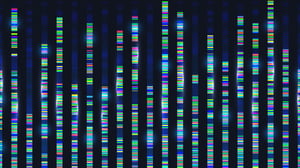Science magazine eLife has published the results of a study on 81 people aged over 105. Italo-Swiss researchers have mapped their genetic code, in search of the secrets of a very long life.
Extreme longevity (of the kind allowing people to live beyond 105 years of age) is largely written in our genetic code and is closely linked to the ability of cells to repair DNA damage.
These are the conclusions of an Italo-Swiss study published on online science platform eLife. For the first time, this project conducted an analysis of the entire genome (the genetic makeup) of people enjoying particularly advanced longevity.
The gerontologists of the Universities of Verona and Bologna, and of the Nestlé Research Centre of Lausanne, analysed the entire DNA of 81 people aged over 105. They were divided into semi-supercentenarians (from 105 to 110 years of age) and super-centenarians (aged 110 years of age and more). They then compared the results of these analyses with genetic data from 36 people living in the same areas with an average age of 68.
Longevity switches
Researchers also correlated this information with data from a study recently published by another team, on the DNA of 333 people over the age of one hundred.
In the end, the gerontologists reached the conclusion that, to successfully reach the 105-mark, a decisive role is played by the variants of two genes called COA1 and STK17A, which represent a kind of extreme longevity switch.
STK17A was the gene which seemed to play the most active role in all 81 of those studied. STK17A governs important phases in cell response to DNA damage. Amongst others, it is the gene which sends the cell towards a programmed death (or apoptosis, in technical terms), when cellular suicide is the best option. In addition, STK17A regulates the amount of chemical substances which are highly reactive inside cells and can, in excessive amounts, become toxic. In short, STK17A governs processes which, if not properly regulated, can, over time, promote the onset of illnesses typically associated with ageing, such as cancer, cardiovascular problems, stroke, and type 2 diabetes, to name a few.
The second gene involved, called COA1, appears to be very active in semi-supercentenarians, but less in super-centenarians. It usually plays a part in energy exchanges inside cells, regulating the relationship between the nucleus and the mitochondria (the “power station”) - and as we know, when mitochondria work too hard, cellular ageing speeds up.
Another aspect to emerge concerns a third gene, called BLVRA, which plays an important role in disposing of cellular debris, another process which is vital for keeping the body healthy.
The team also measured the number of mutations which people who live an extremely long life accumulate over their lifetimes. In so doing they discovered that their mutation level was far lower than normal in certain key genes. In other words, these individuals seem to be able to avoid an age-related increase in major, more dangerous mutations.
And for people without such favourable gene?
“Our results suggest that the mechanisms for repairing DNA, and a low level of mutations in certain genes, are two of the key mechanisms protecting people who reach a very advanced age from ageing-related illnesses,” confirmed senior author Claudio Franceschi, emeritus professor of Immunology at Bologna University.
But will all this help people who don’t have such favourable STK17A and COA1 genes? The hope is that means will be found to reproduce the effects of those variants in other ways.

